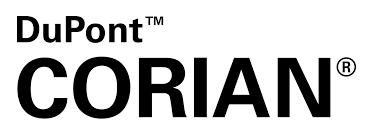
Best Countertop Manufacturers
We carry the best collection available on the market for the best value.
Modern kitchen countertops are made using a variety of materials and techniques, depending on the desired style, durability, and budget. Here are some common methods for making modern kitchen countertops:
Natural Stone (e.g., Granite, Marble, Quartzite):
- Extraction: The stone is extracted from quarries using specialized equipment.
- Cutting and Shaping: Large blocks of stone are cut into slabs of varying thickness using diamond wire saws or gang saws. These slabs are then shaped and polished to achieve the desired finish.
- Installation: The slabs are installed on kitchen cabinets using adhesive materials and sometimes reinforced with steel rods for support.
Engineered Stone (e.g., Quartz):
- Ingredients Mixing: Quartz particles are mixed with resins, pigments, and additives to create a slurry.
- Molding: The slurry is poured into molds of various sizes and shapes to form slabs.
- Curing: The slabs are cured in ovens or under UV light to harden the resin and form a solid surface.
- Finishing: The surfaces are polished to achieve a smooth and glossy appearance.
Solid Surface (e.g., Corian):
- Mixing: Acrylic or polyester resins are mixed with minerals and pigments to create a homogeneous mixture.
- Forming: The mixture is poured into molds and allowed to cure to form solid sheets.
- Fabrication: The solid surface sheets are cut, shaped, and sanded to the desired size and edge profile.
- Joining: Pieces are joined using adhesive materials to create seamless countertops.
Laminate (e.g., Formica):
- Substrate Preparation: Particleboard or plywood is cut to size and prepared as a base for the laminate.
- Laminate Application: Sheets of laminate material with decorative patterns are bonded to the substrate using heat and pressure.
- Edge Finishing: The edges are trimmed and finished with edge banding or laminate strips.
Concrete:
- Forming: Concrete is poured into molds or forms designed to the desired shape and size of the countertop.
- Reinforcement: Steel reinforcement may be added for strength and durability.
- Curing and Finishing: The concrete is allowed to cure and then polished, sealed, and sometimes stained or textured for aesthetic appeal.
Metal (e.g., Stainless Steel, Zinc):
- Sheet Metal Fabrication: Metal sheets are cut, bent, and welded to form the countertop shape.
- Finishing: The metal surface is polished, brushed, or treated to achieve the desired finish and durability.
- Installation: Metal countertops are typically installed by welding or fastening them to a supporting structure.
Each type of countertop material has its unique characteristics, benefits, and maintenance requirements, making it essential for homeowners to choose based on their preferences and needs.





